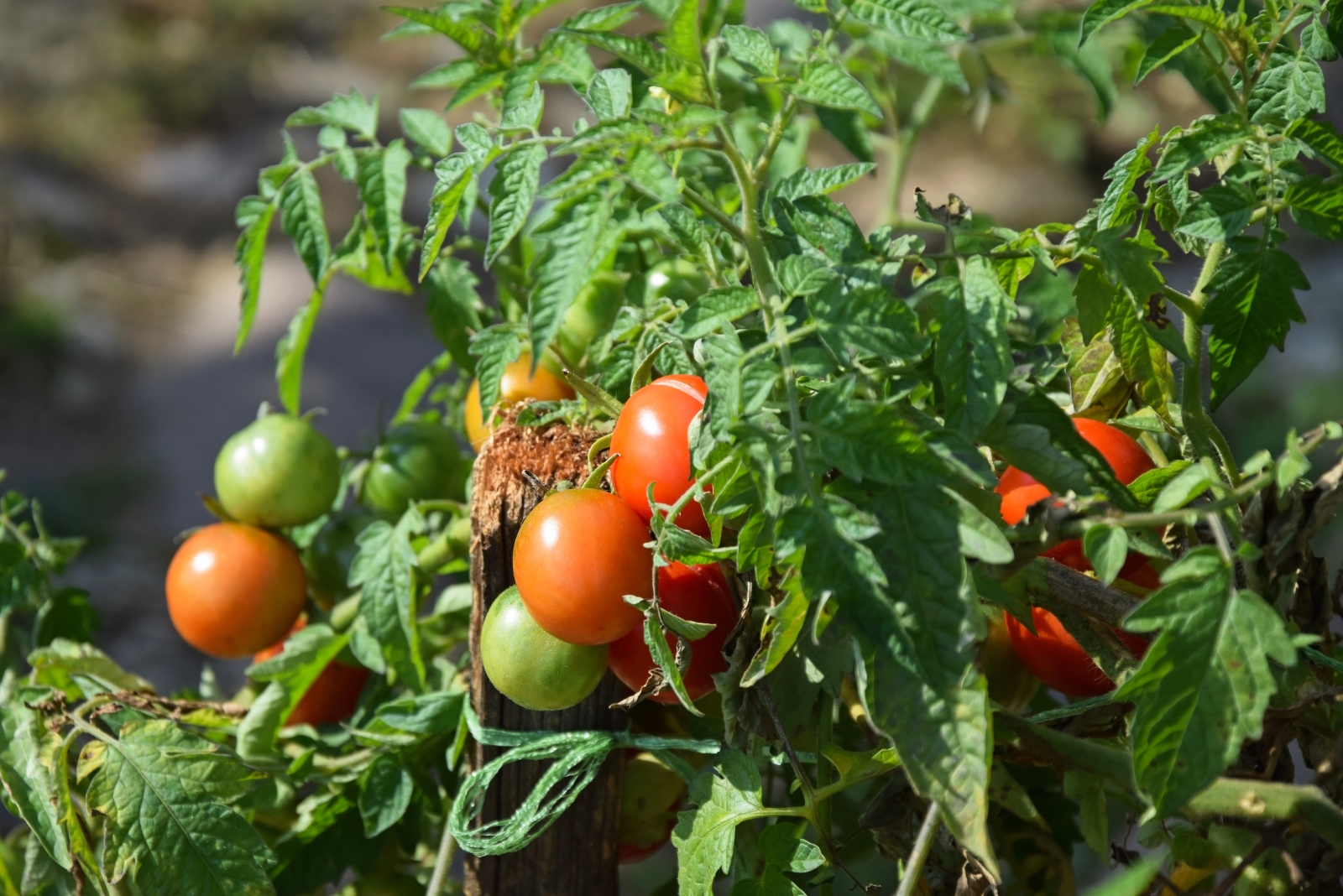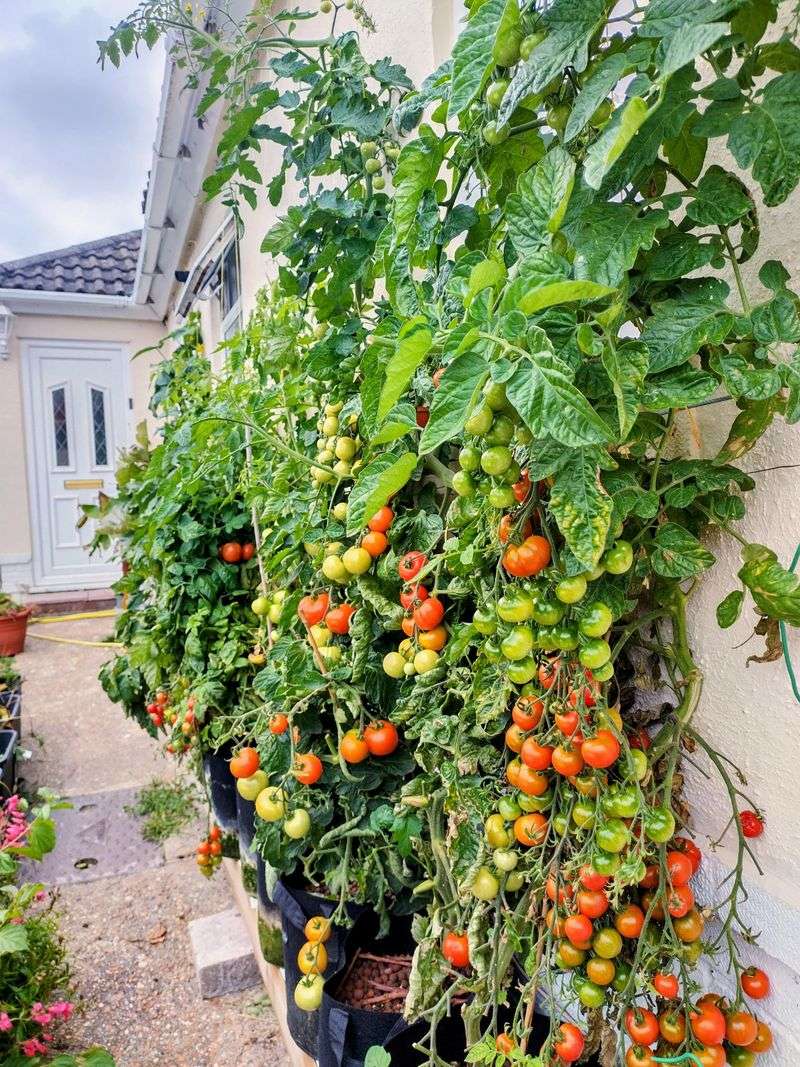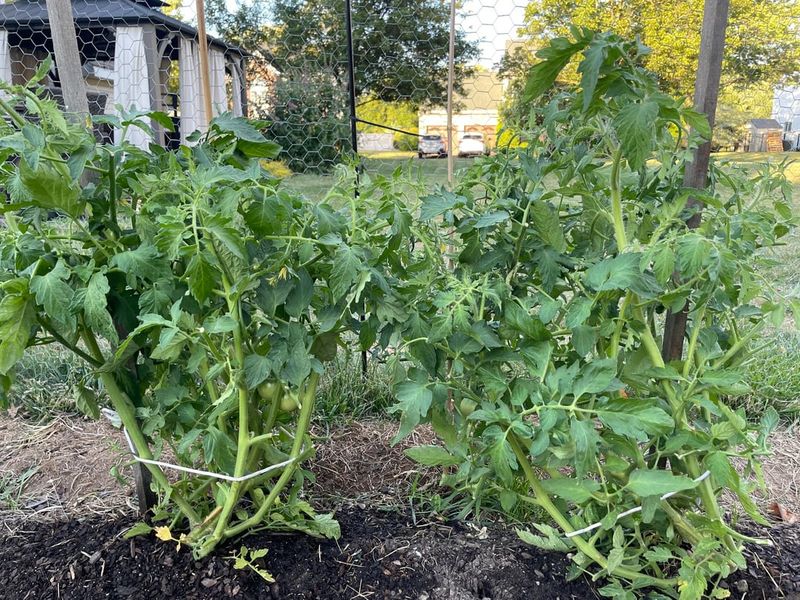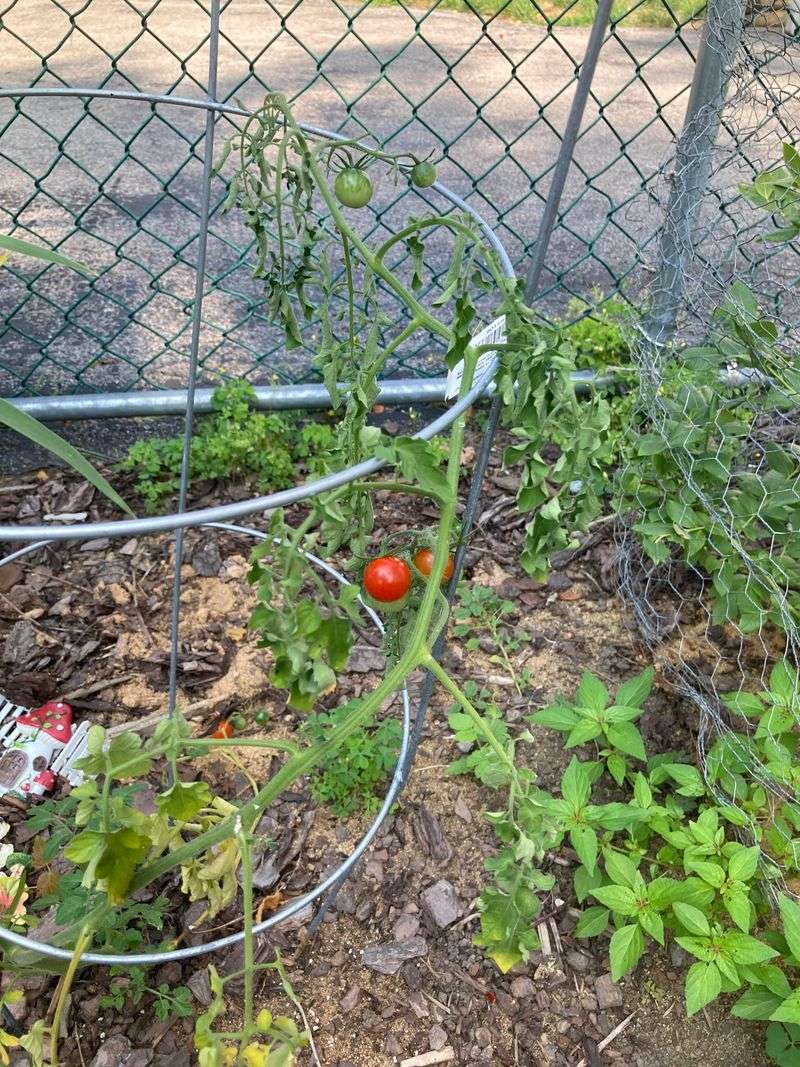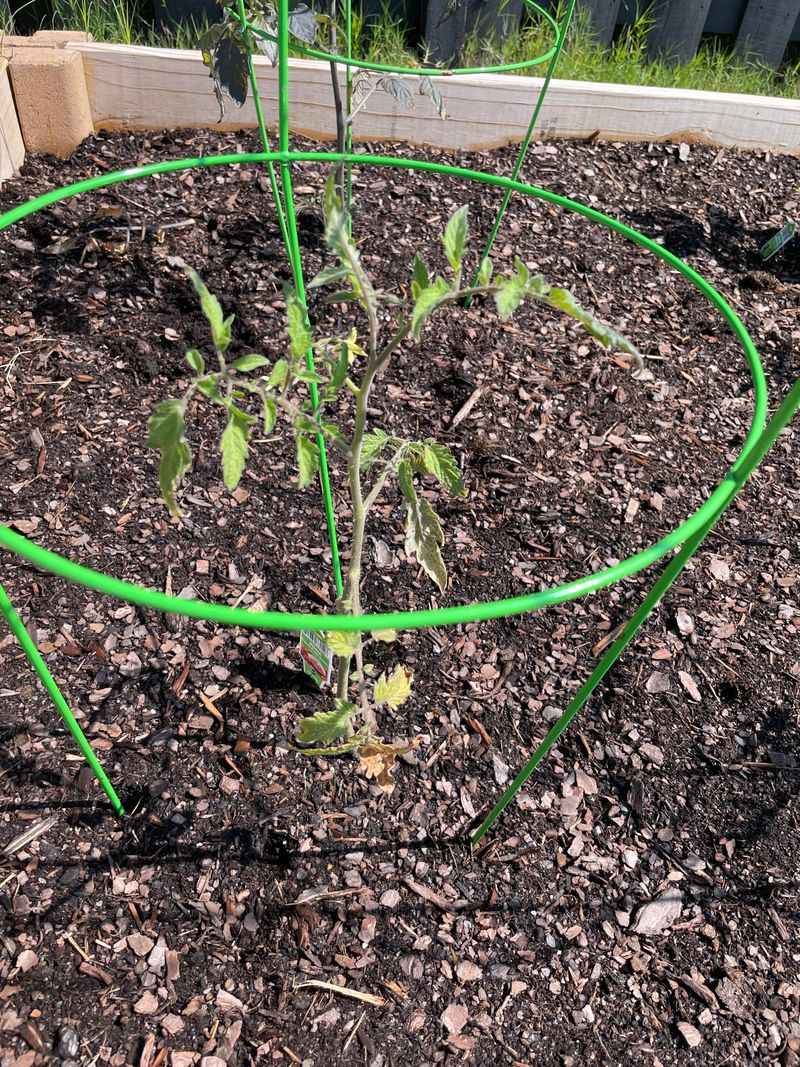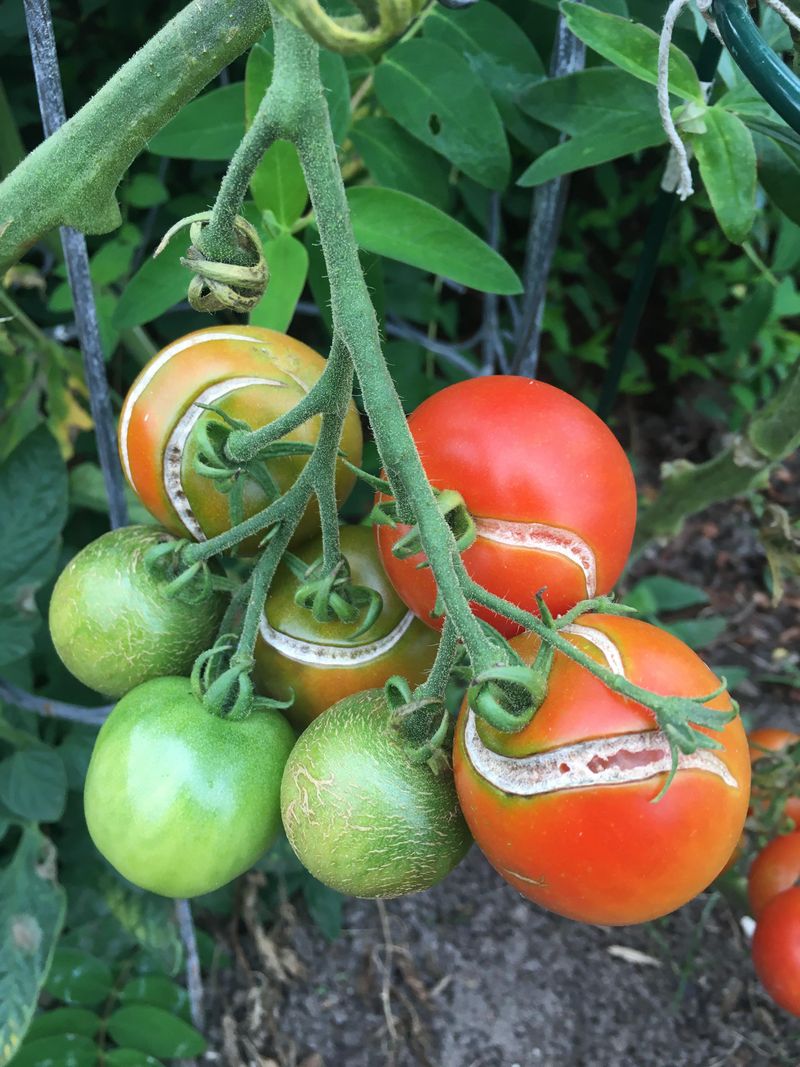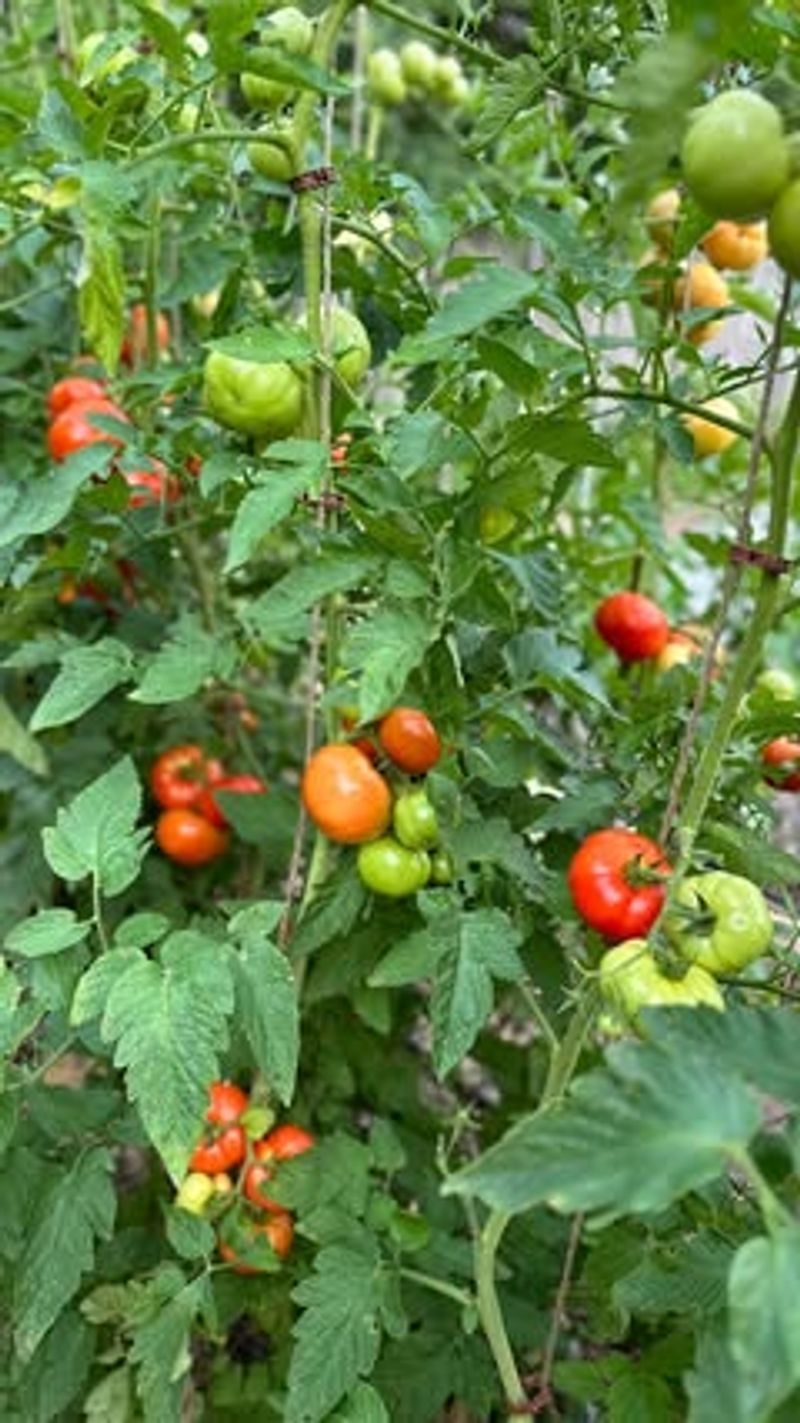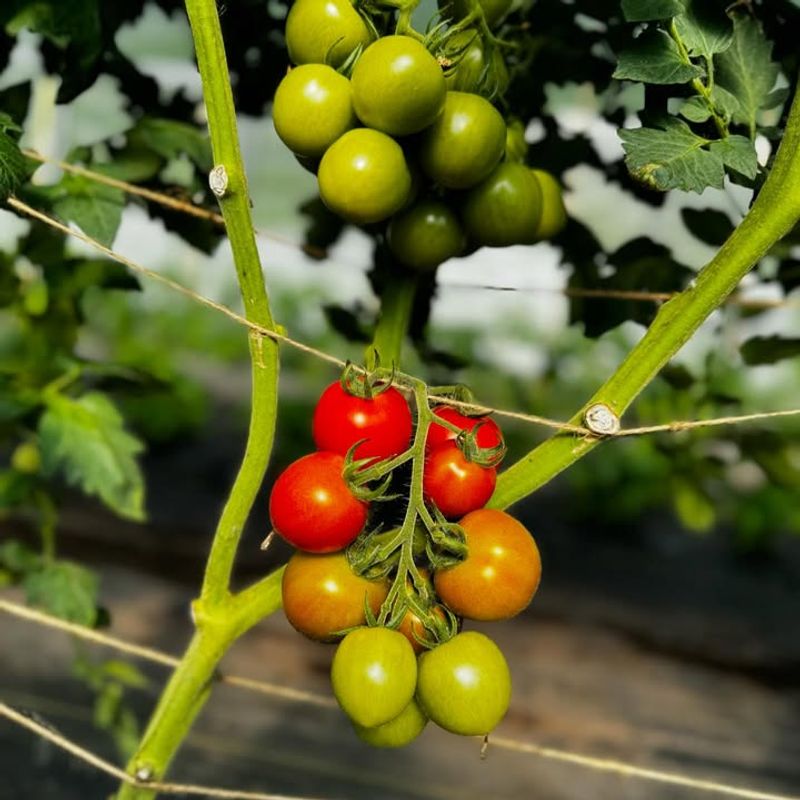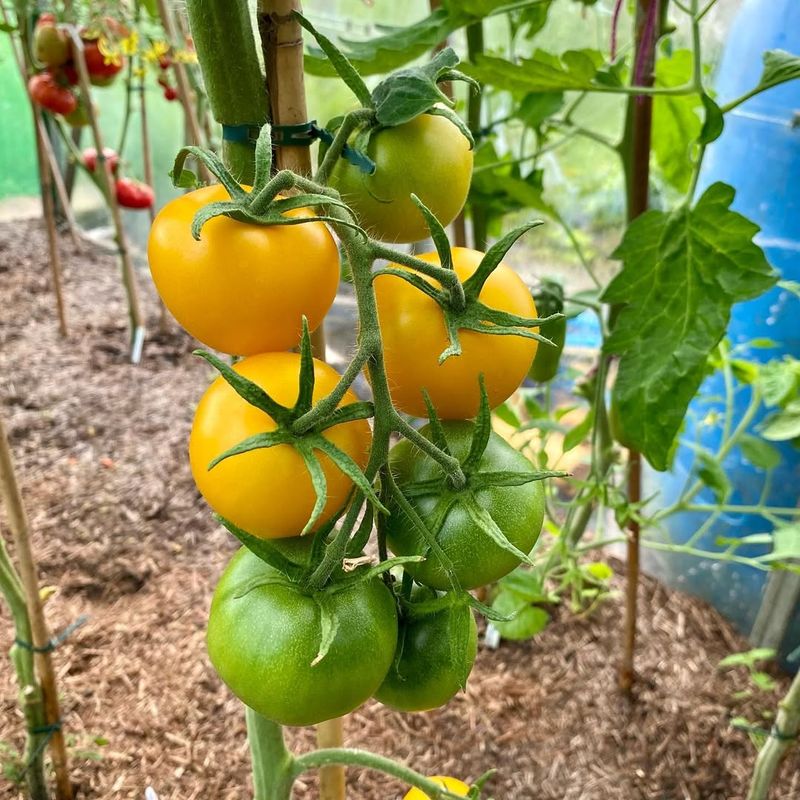Tomatoes can be dramatic plants, especially in Utah’s tricky growing conditions. I learned that lesson after one summer full of stunted vines and sad fruit.
Certain spots just don’t work, no matter how much care you give them. Avoiding these problem areas makes the difference between frustration and a bumper crop.
1. Deep Shade Areas Under Large Trees
Tomatoes are sun-loving plants that need at least six to eight hours of direct sunlight daily. Planting them under big trees in your Utah yard might seem convenient, but the dense shade will stunt their growth dramatically.
Without enough sunshine, your plants will produce weak stems and very few fruits. The competition for water and nutrients from tree roots makes matters even worse.
Choose open spots away from towering trees where sunshine can reach your tomato plants throughout the day.
2. Low-Lying Areas That Collect Water
Standing water is a tomato plant’s worst nightmare. Low spots in your Utah garden where rainwater or irrigation pools can drown your plants’ roots quickly.
Tomatoes need well-drained soil to stay healthy and productive. When roots sit in waterlogged soil, they can’t get oxygen, leading to root rot and plant death within days.
Always choose slightly elevated or level ground with good drainage. If your yard has drainage issues, consider building raised beds instead of planting directly in problematic areas.
3. Against North-Facing Walls or Fences
North-facing walls receive the least amount of sunlight throughout the day, making them terrible spots for tomatoes. In Utah, where growing seasons are already shorter than many states, maximizing sun exposure becomes absolutely essential.
Plants placed here will stretch toward the sun, becoming leggy and weak. They’ll produce fewer flowers and even fewer tomatoes.
South-facing or west-facing walls work much better because they capture maximum sunlight and provide extra warmth from heat radiating off the structure.
4. Windy, Exposed Hilltops or Slopes
Utah’s strong winds can wreak havoc on tender tomato plants. Exposed hilltops and slopes offer zero protection from gusts that can snap stems, tear leaves, and knock over even staked plants.
Constant wind also dries out soil faster, meaning you’ll need to water more frequently. Wind stress prevents plants from focusing energy on fruit production.
Pick sheltered locations with natural windbreaks like buildings, hedges, or strategically placed fencing to protect your precious tomato crop from Utah’s unpredictable breezes.
5. Directly Next to Black Walnut Trees
Black walnut trees produce a chemical called juglone that’s toxic to tomatoes and many other garden plants. Even if the tree isn’t in your Utah yard, roots can extend far beyond the canopy.
Tomatoes planted within 50 feet of black walnuts will wilt, turn yellow, and die within weeks. The toxin remains in the soil for years after the tree is removed.
Always research whether black walnuts grow nearby before selecting your tomato planting site to avoid heartbreaking losses.
6. In Heavy Clay Soil Without Amendment
Utah has plenty of areas with heavy clay soil that holds water like a sponge and becomes rock-hard when dry. Tomatoes planted directly in unamended clay will struggle to establish healthy root systems.
Clay prevents proper drainage and oxygen flow to roots. Plants become stunted, yellow, and susceptible to diseases.
Before planting tomatoes in clay-heavy Utah soil, work in generous amounts of compost, peat moss, or other organic matter to improve texture and drainage significantly for better results.
7. Too Close to Sprinkler Heads
Planting tomatoes right next to sprinkler heads seems logical, but it actually causes more problems than it solves. Constant moisture on leaves promotes fungal diseases like early blight and powdery mildew, common issues in Utah gardens.
Tomatoes prefer water at their roots, not on their foliage. Overhead watering also wastes water through evaporation.
Position plants where they’ll receive water at soil level through drip irrigation or soaker hoses, keeping leaves dry and plants healthier throughout Utah’s growing season.
8. In Previously Diseased Nightshade Spots
Crop rotation matters tremendously for tomatoes. Planting them where potatoes, peppers, eggplants, or other tomatoes grew the previous year invites trouble in Utah gardens.
Soil-borne diseases affecting nightshade family plants linger for years. Verticillium wilt, fusarium wilt, and nematodes build up in the soil over time.
Rotate your tomato planting locations annually, waiting at least three years before returning to the same spot. This simple practice dramatically reduces disease pressure and improves yields consistently.
9. Right Up Against House Foundations
That narrow strip right against your Utah home’s foundation might seem like wasted space, but it’s actually a poor choice for tomatoes. Foundation plantings often lack adequate air circulation, creating humid microclimates perfect for disease development.
Overhanging eaves block rainfall and sunlight. Reflected heat from walls can stress plants during Utah’s hottest summer days.
Leave at least three feet between your house and tomato plants to ensure proper airflow, easier maintenance access, and healthier growing conditions overall.
10. In Contaminated Soil Near Roads
Roadside soil in Utah often contains lead, oil residues, and other contaminants from decades of vehicle traffic. Tomatoes are edible crops that can absorb these toxins from contaminated soil.
Salt from winter road treatments also damages plants and accumulates in soil over time. Dust and pollution settle on foliage constantly.
Keep your tomato garden at least 25 feet from busy roads. If space is limited, use raised beds with fresh soil to create a safe barrier between your food and potential contaminants.

